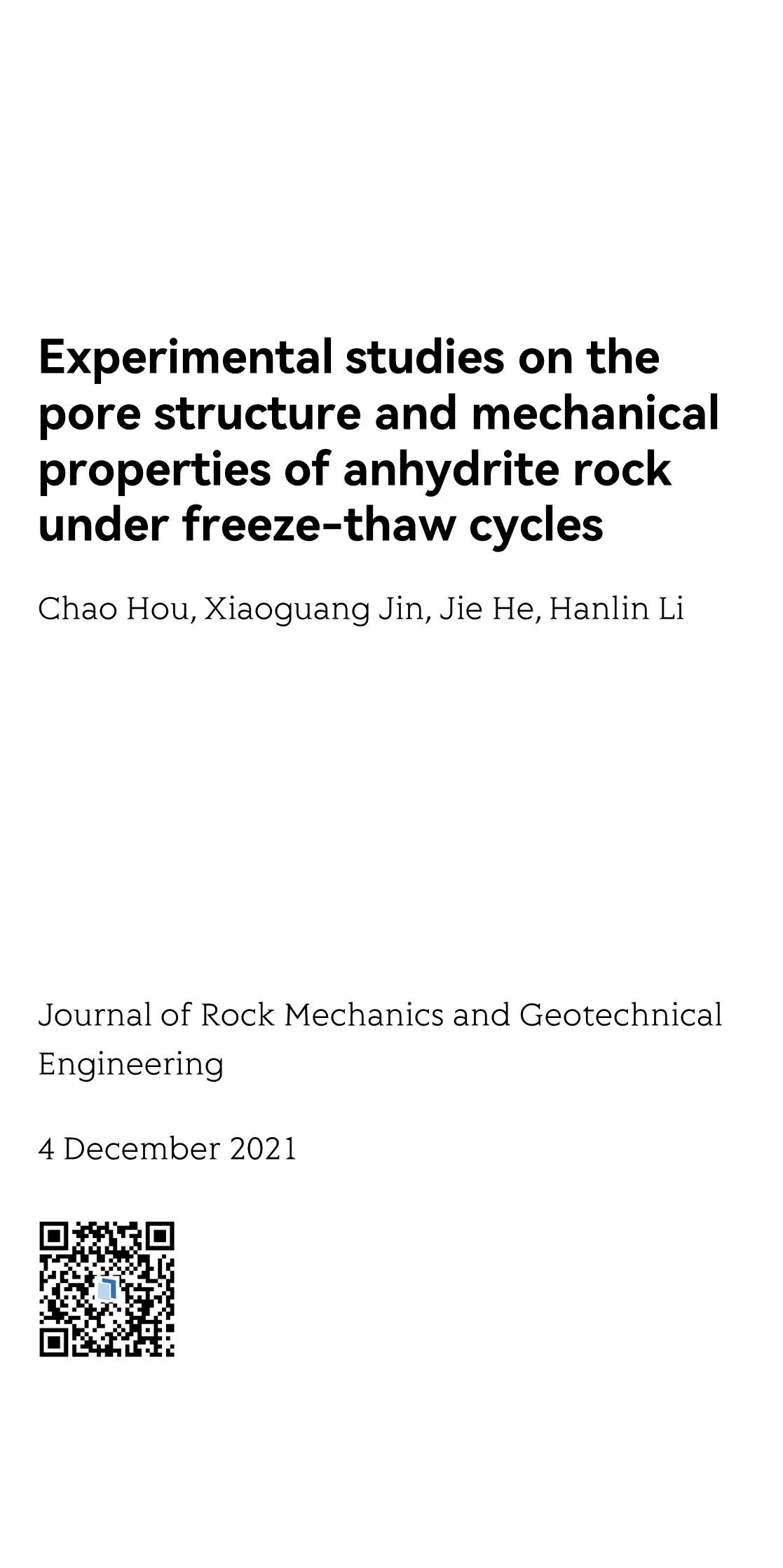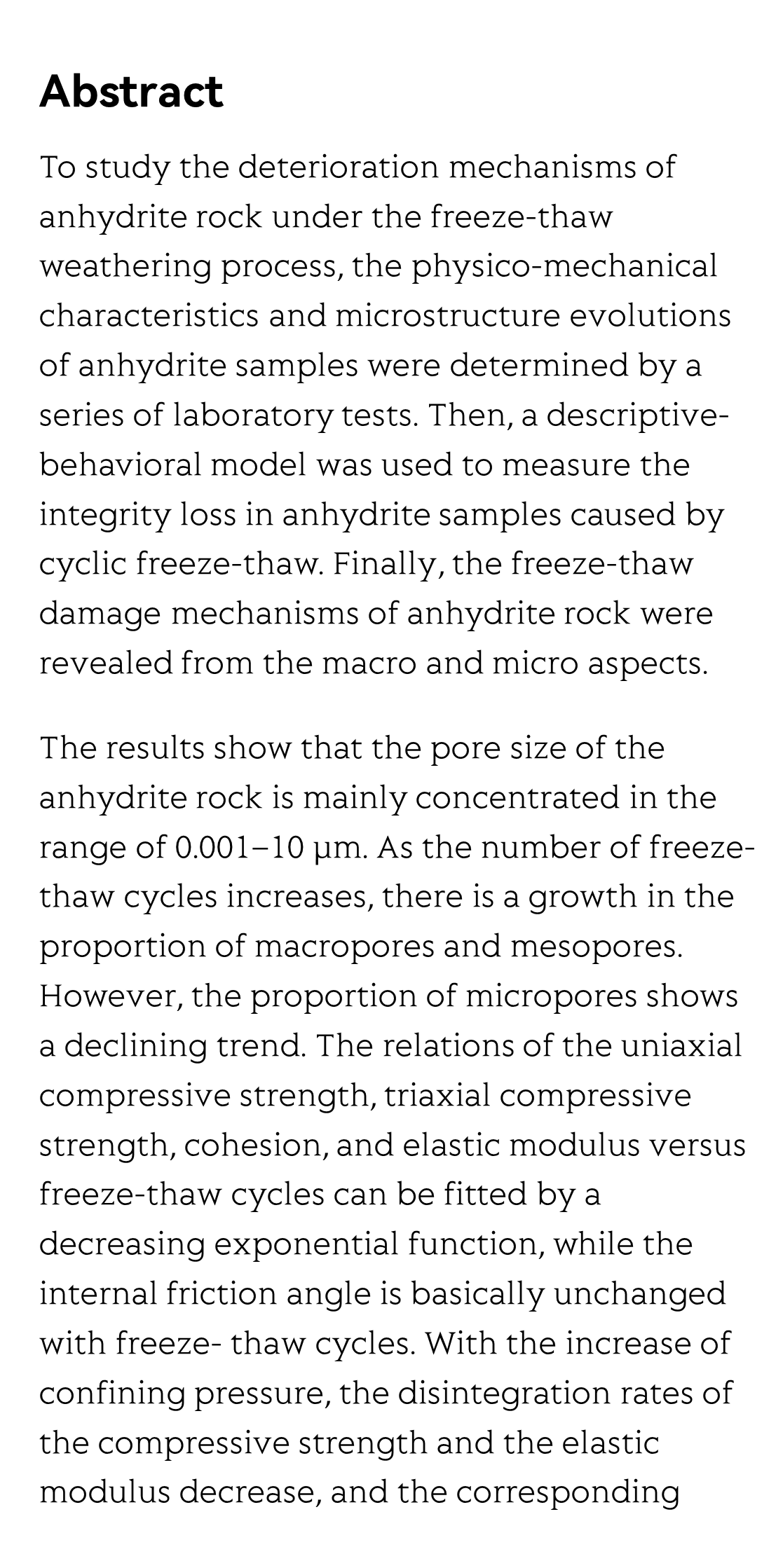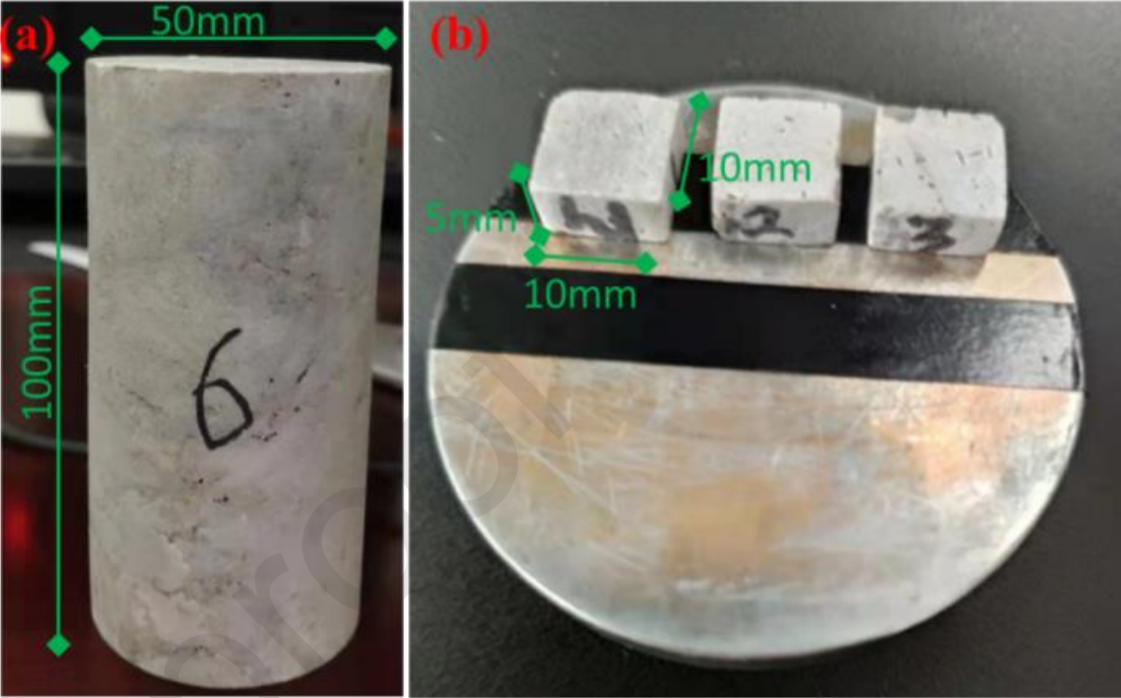(Peer-Reviewed) Experimental studies on the pore structure and mechanical properties of anhydrite rock under freeze-thaw cycles
Chao Hou 候超 ¹, Xiaoguang Jin 靳晓光 ¹ ² ³, Jie He 何洁 ¹, Hanlin Li 李翰林 ¹
¹ School of Civil Engineering, Chongqing University, Chongqing, 400045, China
中国 重庆 重庆大学土木工程学院
² Key Laboratory of New Technology for Construction of Cities in Mountain Area of the Ministry of Education, Chongqing University, Chongqing, 400045, China
中国 重庆 重庆大学 山地城镇建设与新技术教育部重点实验室
³ State Key Laboratory of Coal Mine Disaster Dynamics and Control, Chongqing University, Chongqing, 400045, China
中国 重庆 重庆大学 煤矿灾害动力学与控制国家重点实验室
Abstract
To study the deterioration mechanisms of anhydrite rock under the freeze-thaw weathering process, the physico-mechanical characteristics and microstructure evolutions of anhydrite samples were determined by a series of laboratory tests. Then, a descriptive-behavioral model was used to measure the integrity loss in anhydrite samples caused by cyclic freeze-thaw. Finally, the freeze-thaw damage mechanisms of anhydrite rock were revealed from the macro and micro aspects.
The results show that the pore size of the anhydrite rock is mainly concentrated in the range of 0.001–10 μm. As the number of freeze-thaw cycles increases, there is a growth in the proportion of macropores and mesopores. However, the proportion of micropores shows a declining trend. The relations of the uniaxial compressive strength, triaxial compressive strength, cohesion, and elastic modulus versus freeze-thaw cycles can be fitted by a decreasing exponential function, while the internal friction angle is basically unchanged with freeze- thaw cycles. With the increase of confining pressure, the disintegration rates of the compressive strength and the elastic modulus decrease, and the corresponding half-life values increase, which reveals that the increase of confining pressures could inhibit freeze-thaw damage to rocks.
Moreover, it has been proven that the water chemical softening mechanism plays an essential role in the freeze-thaw damage to anhydrite rock. Furtherly, it is concluded that the freeze-thaw weathering process significantly influences the macroscopic and microscopic damages of anhydrite rock.
Flicker minimization in power-saving displays enabled by measurement of difference in flexoelectric coefficients and displacement-current in positive dielectric anisotropy liquid crystals
Junho Jung, HaYoung Jung, GyuRi Choi, HanByeol Park, Sun-Mi Park, Ki-Sun Kwon, Heui-Seok Jin, Dong-Jin Lee, Hoon Jeong, JeongKi Park, Byeong Koo Kim, Seung Hee Lee, MinSu Kim
Opto-Electronic Advances
2025-09-25
Dual-frequency angular-multiplexed fringe projection profilometry with deep learning: breaking hardware limits for ultra-high-speed 3D imaging
Wenwu Chen, Yifan Liu, Shijie Feng, Wei Yin, Jiaming Qian, Yixuan Li, Hang Zhang, Maciej Trusiak, Malgorzata Kujawinska, Qian Chen, Chao Zuo
Opto-Electronic Advances
2025-09-25







